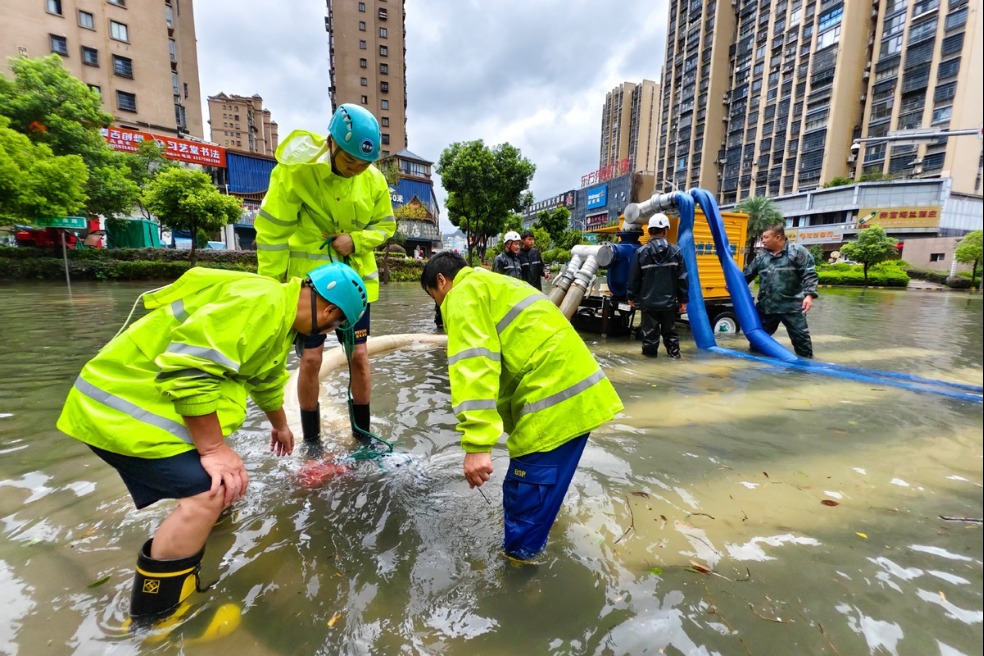Govt bonds the key as post-flood repair work completed
By Hou Liqiang | China Daily | Updated: 2024-04-16 10:03
Most of the water resources management facilities in the Beijing-Tianjin-Hebei region that were damaged by floods in July have been restored — and some even enhanced — thanks to bonds issued by the central government late last year.
The Huaihe River Commission said the central government approved 413 restoration projects in the region, which is located in the Huaihe River Basin. It said 354 had been completed as of Wednesday.
The total investment for the projects stands at over 12 billion yuan ($1.7 billion), most of which has come from the bonds the central government issued last year.
In October, the central government decided to issue 1 trillion yuan of additional bonds to support the rebuilding of disaster-hit areas and strengthen the country's disaster-relief capabilities.
The bond issuance was announced after devastating floods swelled North China's Haihe River Basin and the Songhua River Basin in Northeast China during last year's flood season.
The Beijing Water Authority said it will accomplish the restoration of all its flood-ravaged water resources management facilities before June, which usually marks the beginning of the major flood season in the capital.
The capabilities of the damaged facilities will be restored to pre-flood levels, with some even enhanced, the authority said.
One of the facilities that has been restored is the Daning Reservoir, on the border of Beijing's Fengtai and Fangshan districts.
Amid the massive floods in July, the reservoir was one of three put into use as flood detention basins. That left many of its facilities seriously damaged, including an impermeable wall and a rubber dam.
The project to restore the damaged facilities was launched on Oct 2 with a total investment of over 44.7 million yuan, with 70 percent contributed by the additional central government bonds.
Despite the disruption caused by extreme cold during winter and the high level of groundwater in the area, the project was essentially completed on April 7.
Concrete pouring requires relatively high temperatures, because if it is conducted in low temperatures, the concrete may crack, said Zhao Minglei, deputy head of the reservoir's administrative office.
"To cope with the extreme cold last winter, workers had to build a makeshift shed over the area under construction and also use heating equipment to increase the temperature," he said.
Shi Jianwei, head of the construction team, said the level of groundwater in the area was quite high because of the water in the reservoir, and that also made it difficult to forge ahead with construction work.
"It was very much like we were working in a big pool," he said.
The team had to use up to 50 pumps — each capable of pumping 100 cubic meters of water an hour — to reduce the level of groundwater to an acceptable state, Shi said.
Yang Zhigang, the head of the Huaihe River Commission's flood and drought control department, said the commission has asked construction contractors of restoration projects that cannot be completed before the rainy season in the Beijing-Tianjin-Hebei region to hammer out emergency plans to cope with potential floods this year.
"Once floods happen, they will roll out measures in a timely manner to prevent floods from affecting construction work," he said.
























